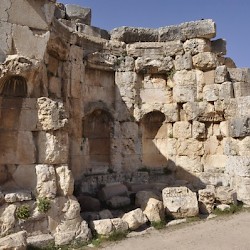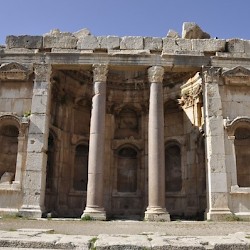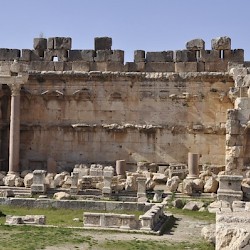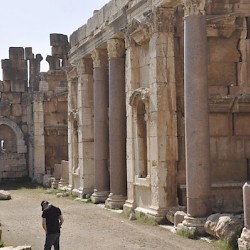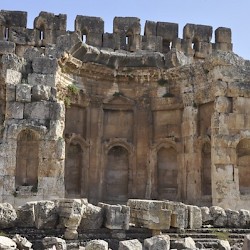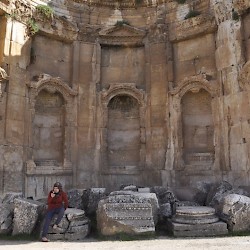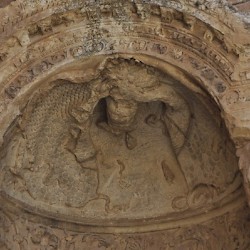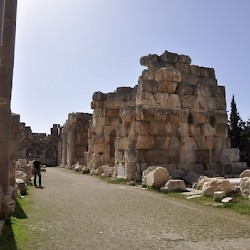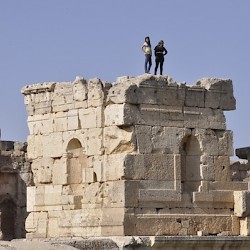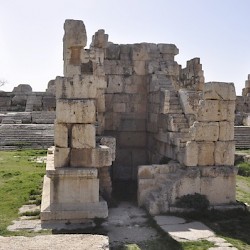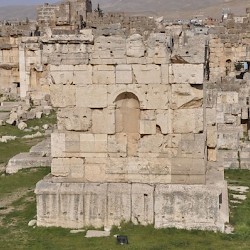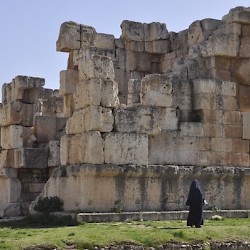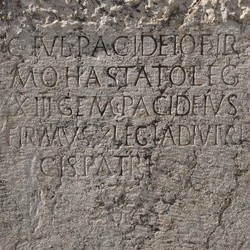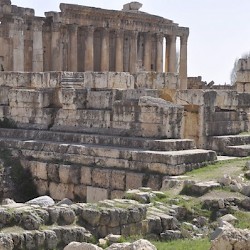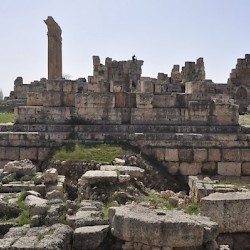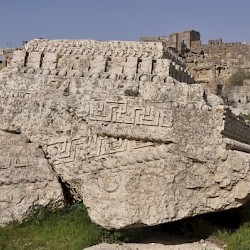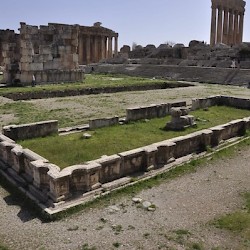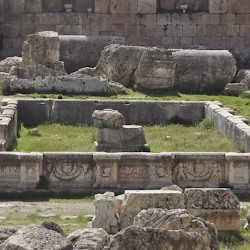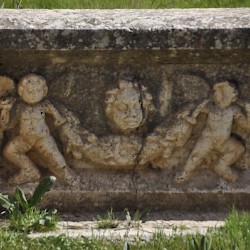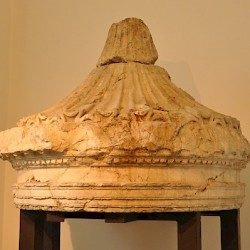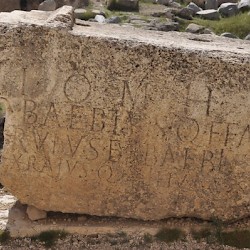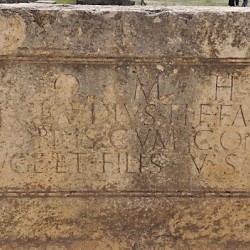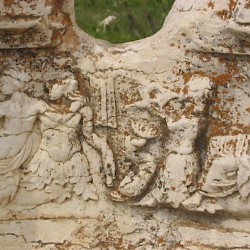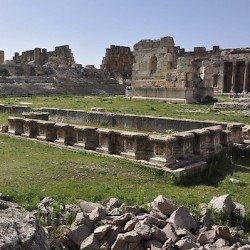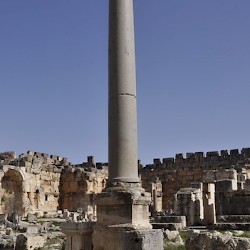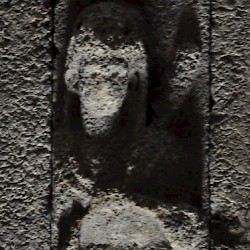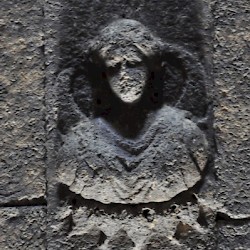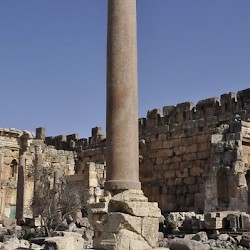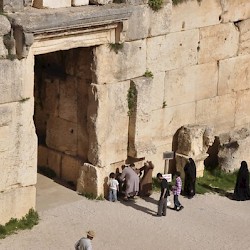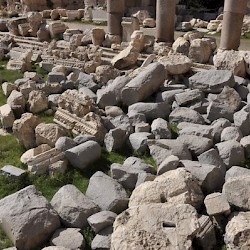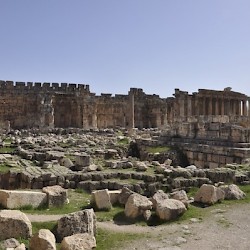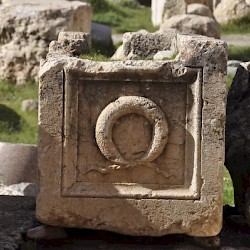Baalbek: Temple of Jupiter, Great Court
Baalbek or Heliopolis (Ἡλιούπολις, "sun city"): town in the northern Bekaa valley, site of the largest sanctuary in the Roman world.
Temple of Jupiter: Great Court
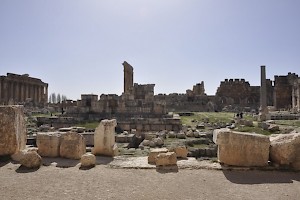
The Great Court of the temple of Jupiter in Baalbek is a pretty great court indeed: it is 135 meters wide and 113 meters long. Nevertheless, it is about a third of the court surrounding the temple of Ba'al in Palmyra. On three sides - north, east, and south - the Great Court at Baalbek is surrounded by porticoes. On the remaining side, in the west, was the majestic staircase leading to the shrine itself. On the quad between the porticoes were two basins, two tower-altars, and two free-standing columns.
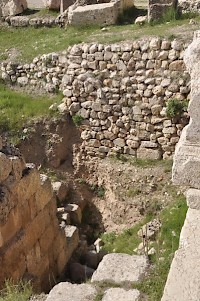
The Great Court is built on top of a very ancient hill, and it appears that the altar-towers were deliberately built on this summit. Archaeologists have dug a sounding near the Great Court, and established that the hill top was already occupied in the Chalcolithic, i.e., the fourth millennium BCE.
The fact that great care was taken to build the altar on this site, and that a large terrace was built to build a large sanctuary at the same level, suggests that this was a very ancient holy place, where the cult must have started. Nevertheless, we cannot be fully certain about this. It may, after all, be coincidence.
The porticoes surrounding the square had façades of columns of pink granite from Egypt, eighty-four altogether, which must have been brought to this place via the port of Tripoli and through the "Gate of Homs" (the depression between the Lebanon ;and the Bargylus Mountains) and the Orontes valley. Behind this line of columns were several square and semi-circular halls with two levels of niches for statues. We know that merchants were sitting in the shade.
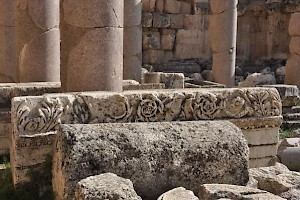
The two tower-altars were in fact platforms on which the sacrifices were performed. This is typical for the Near East: in Petra, people had to climb to the "high place of worship"; in Palmyra, one had to climb to the roof of the temple; and in Baalbek, sacrificial platforms were built. Similar examples can be seen in Faqra, Chhim, and Machnaqa.
The small altar at Baalbek, built at the beginning of the first century CE, was in the exact center of the Great Court. The monument is essentially a cube of about 7x7x7 meters. There were two staircases, making it possible for the priests to go up with the animals without having to look out for people coming down.
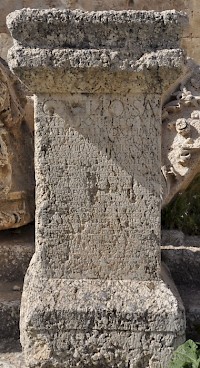
Among these animals were lambs and birds, but on other occasions, bread, honey, and wine were sacrificed. Occasionally, larger animals may have been sacrificed, and it is interesting that there was a kind of conduit for the blood. This emptied itself into a small canal that made sure that the blood flowed out of the sanctuary. There is a similar canal in the temple of Ba'al in Palmyra.
Some two generations later, the large altar was built, five meters to the east. It must have been at least fourteen meters high, and was also a giant cube, with staircases inside and a sacrificial platform on the roof. It had four gates, which made it easy for the pilgrims to climb to the top, where they might look over the small altar and over the staircase in front of the temple, through the main gate, into the shrine, where they could see the statue of the god.
To the north and south of the two altars are two basins, with fountains in the center. (One of these is now in the Pergamonmuseum in Berlin.) They are decorated with all kinds of mythological sea creatures, like Nereids and Tritons, erotes with garlands, and Gorgons. Not all decorations are finished. The basins offered water to the priest, were a nice decoration, and may have played a role during the ablutions of the visitors.
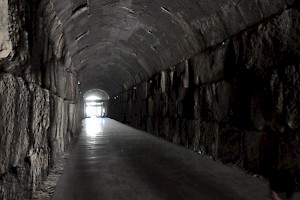
On the great court, there were also two tall columns. The southern one was made of pink granite, the northern one of gray granite. Both types of stone were imported from Egypt.
The exact function is not known, but it is tempting to think of the columns named Jakin and Boaz in front of the temple of Jerusalemnote and the two pillars in front of the temple of Melqart in Tyre. Two inscriptions on the pedestal allow us to date these monuments to the second century CE.
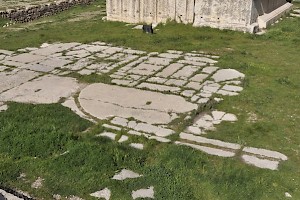
The square was decorated with all kinds of inscriptions, mostly in Latin, and often erected to honor Roman soldiers. One of these commemorates Gaius Velius Rufus. Below the terrace were tunnels. (The museum of Baalbek is in one of these.)
In the late fourth or early fifth century, the two altars were demolished and replaced by a basilica. Below the great staircase leading to the shrine, the place of one of the apses is still visible.
